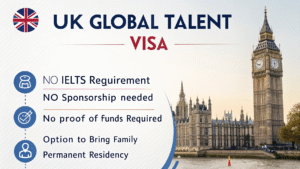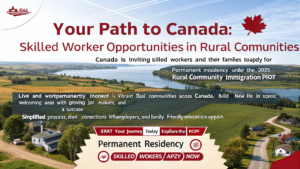How to Become a Registered Nurse or Midwife in Australia: The Complete Guide
Are you dreaming about starting a nursing or midwifery career in Australia? You’re not alone! Many people around the world want to work as a Registered Nurse (RN) or Midwife Down Under because of the high demand, great salaries, and excellent work-life balance.
But how do you actually become a nurse or midwife in Australia — especially if you’re an international applicant? Don’t worry — this guide will break it down into simple, clear steps you can follow.
🏥 Why Work as a Nurse or Midwife in Australia?
First, why is Australia so popular for nurses and midwives?
✅ Nursing is in high demand. Australia has a big shortage of skilled nurses and midwives, so qualified workers are needed urgently.
✅ Great salaries and conditions. Registered Nurses earn good wages — usually AUD $65,000–$100,000+ per year, depending on experience and location.
✅ Pathway to Permanent Residency (PR). Many nursing and midwifery jobs are on Australia’s Skilled Occupation List, making it easier to apply for skilled visas and PR.
✅ Work-life balance. Enjoy flexible shifts and generous leave — plus you’ll live in one of the world’s safest, most beautiful countries!
✅ Step 1: Understand the Roles
Before you start, make sure you know the difference:
Registered Nurse (RN): Provides medical care, gives medications, assists doctors, and cares for patients in hospitals, clinics, and aged care.
Midwife: Specializes in pregnancy, childbirth, and postnatal care for mothers and babies.
Some people choose to become dual-qualified — a Registered Nurse and Midwife — which can give you more job options!
✅ Step 2: Check If You’re Eligible
To work as a nurse or midwife in Australia, you’ll need to:
✔️ Have a recognized nursing or midwifery qualification (usually a Bachelor’s degree).
✔️ Meet English language requirements — usually IELTS Academic, OET, PTE Academic, or TOEFL iBT.
✔️ Be registered with the Nursing and Midwifery Board of Australia (NMBA) through the Australian Health Practitioner Regulation Agency (AHPRA).
Tip: If you trained overseas, your qualifications must be assessed as equivalent to Australian standards.
✅ Step 3: Get Your Qualifications Assessed
If you’re an international applicant, you must have your qualifications and skills assessed. Here’s how:
1️⃣ Apply for the Self-Check: Use the AHPRA Self-Check Tool to see which assessment stream you’re in.
2️⃣ Submit all documents: This usually includes your degree, transcripts, proof of English, work experience, and ID.
3️⃣ Wait for your assessment: AHPRA or the Australian Nursing and Midwifery Accreditation Council (ANMAC) will confirm if you meet the requirements.
Pro tip: Many overseas nurses need to complete a Bridging Program or Outcome-Based Assessment (OBA) to meet Australian standards.
✅ Step 4: Pass an English Language Test
If English isn’t your first language, you’ll need to prove you can speak, write, read, and understand it well enough for safe patient care.
Accepted tests include:
✅ Step 5: Complete Additional Training (If Required)
If AHPRA tells you that your training is not fully equivalent, you may need to do extra training:
👉 Bridging Program: A short course (3–6 months) to bring your skills up to Australian standards.
👉 Outcome-Based Assessment (OBA): An exam pathway for overseas nurses. It has two parts:
✅ Step 6: Apply for Registration with AHPRA
Once you meet the qualification and language requirements, you can apply for registration as an RN or Midwife.
Your application will include:
✔️ Proof of identity
✔️ Qualification documents
✔️ Proof of English proficiency
✔️ Criminal history check
✔️ Any bridging program certificates
Once approved — congratulations! You’re officially a Registered Nurse or Midwife in Australia!
✅ Step 7: Get a Job Offer
With your AHPRA registration in hand, you can apply for nursing and midwifery jobs anywhere in Australia.
Good places to look:
👉 Many employers sponsor visas if you need one!
✅ Step 8: Apply for a Visa
If you’re not already in Australia, you’ll need the right work visa.
Popular visa options:
📢 Final Tips for Success
⭐ Stay updated: Nursing rules and visa options change, so check official sites regularly: AHPRA, ANMAC, Home Affairs.
⭐ Get help if needed: Consider using a migration agent or recruitment agency if the process feels overwhelming.
⭐ Connect with others: Join Facebook groups or forums for overseas nurses in Australia — they’re full of helpful advice!
✨ Ready to Start?
So, are you ready to take the next step towards your Australian nursing dream? With dedication and the right information, your dream career in Australia is closer than you think!






